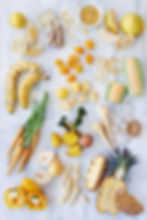Save Food, Save Money, Save the Environment!

Save Food, Save Money, Save the Environment.... with food waste?
The book, Waste Free Kitchen Handbook helps to make that case. Author Dana Gunders, a scientist with the Natural Resources Defense Council (NRDC), shows how you can eat well, waste less, and save money.
After all, NRDC estimates that 40% of the food produced in the U.S. goes to waste and the bulk ends up in landfills emitting methane, a greenhouse gas.
But before that, food is grown, watered, picked, packaged, and transported, a process with an enormous environmental impact. Agriculture uses 70 percent of the fresh water in the United States, for instance, and Gunders says, “It takes the same amount of water to produce a hamburger as it does to take a 90-minute shower.”
In addition, American families alone toss about 25 percent of the food and beverages they buy and NRDC estimates that waste costs the average family of four $1,365 to $2,275 annually.
Just imagine if those dollars were put toward better insulation, new windows, or efficient appliances.
Here are 9 ways to cut food waste.
1. Waste audit. For two weeks, track the foods you toss and estimate their cost. Figure out why you didn’t eat something. Maybe you didn’t have a recipe for something? Did it get lost in the fridge? Do you dislike leftovers? The audit can show what should and shouldn’t be on future shopping lists.
2. Plan wisely. Plan your weekly meals before heading to the grocery store. Pick two proteins, one or two grains, and some vegetables that can be used for multiple meals throughout the week. Stick to your list and don’t be wooed by that 8-pound bag of broccoli that’s on sale or treats you sampled at the warehouse club.
3. Meals ready to eat. Have a few meals – soups, lasagna, and casseroles – ready to roll in your freezer for evenings when you’re short on time. Making some freezer meals also can help you use up larger portions of meat and produce that you buy.
4. Freezer backup. Use the freezer to rescue all sorts of leftovers, including pasta and cheese, and stow away pre-prepped full meals. Gunders offers how-tos on the best way to prep, wrap, store, and label foods.
5. Fridge storage. Where and how you store food affects your waste stream. Gunders tours the fridge, showing where foods should be placed to maximize freshness. The bottom shelf, the coldest area, is best for meat and fish that spoil easily. Brussel sprouts, broccoli, and leafy greens do best in high-humidity drawers.
6. Holiday parties. No one wants a skimpy holiday buffet, but you also don’t want to boil seven pounds of pasta when two will do. Learn some rules of thumb to help you estimate the right party portions.
7. Expiration dates. Understand just what “use by” and “sell by” really mean so you don’t discard food too early.
8. Eat ugly. Misshapen fruit, discolored lettuce leaves, or a little wilt doesn’t mean produce should be destined for the trash. In fact, there’s a movement afoot to promote eating aesthetically challenged produce.
9. Use it up. You can cobble together stale corn tortillas, sour milk, broccoli stalks, and all sorts of leftovers for a tasty meal. Gunders shows you how. Also see, “Salvaged Dinner Parties” in this blog post.
This Month's Tips: Salvaged Dinner Party
If you’re concerned about food waste, consider hosting a salvaged dinner party. Some renowned chefs have been focusing on food waste and and creating menus with about-to-be-tossed food.
You can too. Larissa Zimberoff shows you how.
1. Hunt and gather. Ask guests to bring food nearing their use-by dates and produce they’re about to toss.
2. Plan your dishes. Create a simple menu – soups, spreads, and omelets -- based on ingredients you’ve gathered.
3. Dine. Talk with guests about reducing food waste and give them the recipes to illustrate the how-to.























